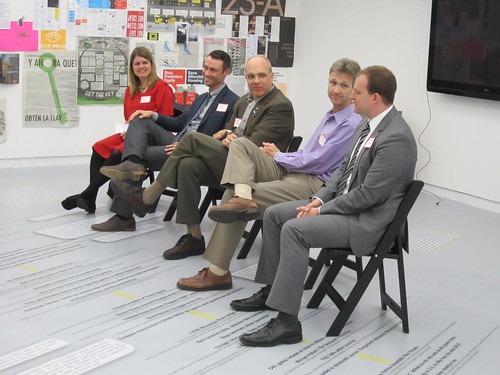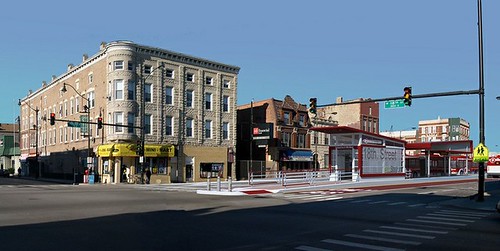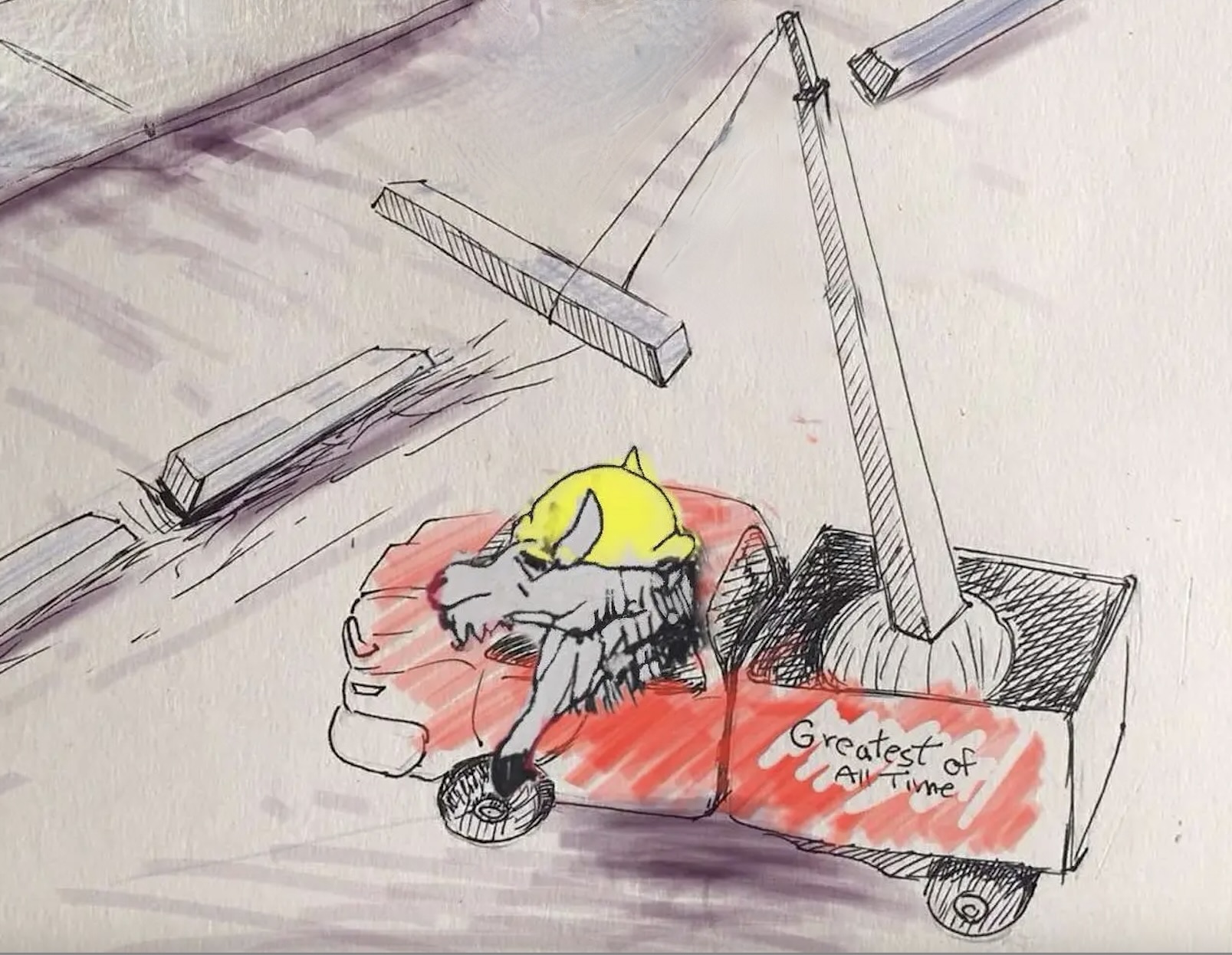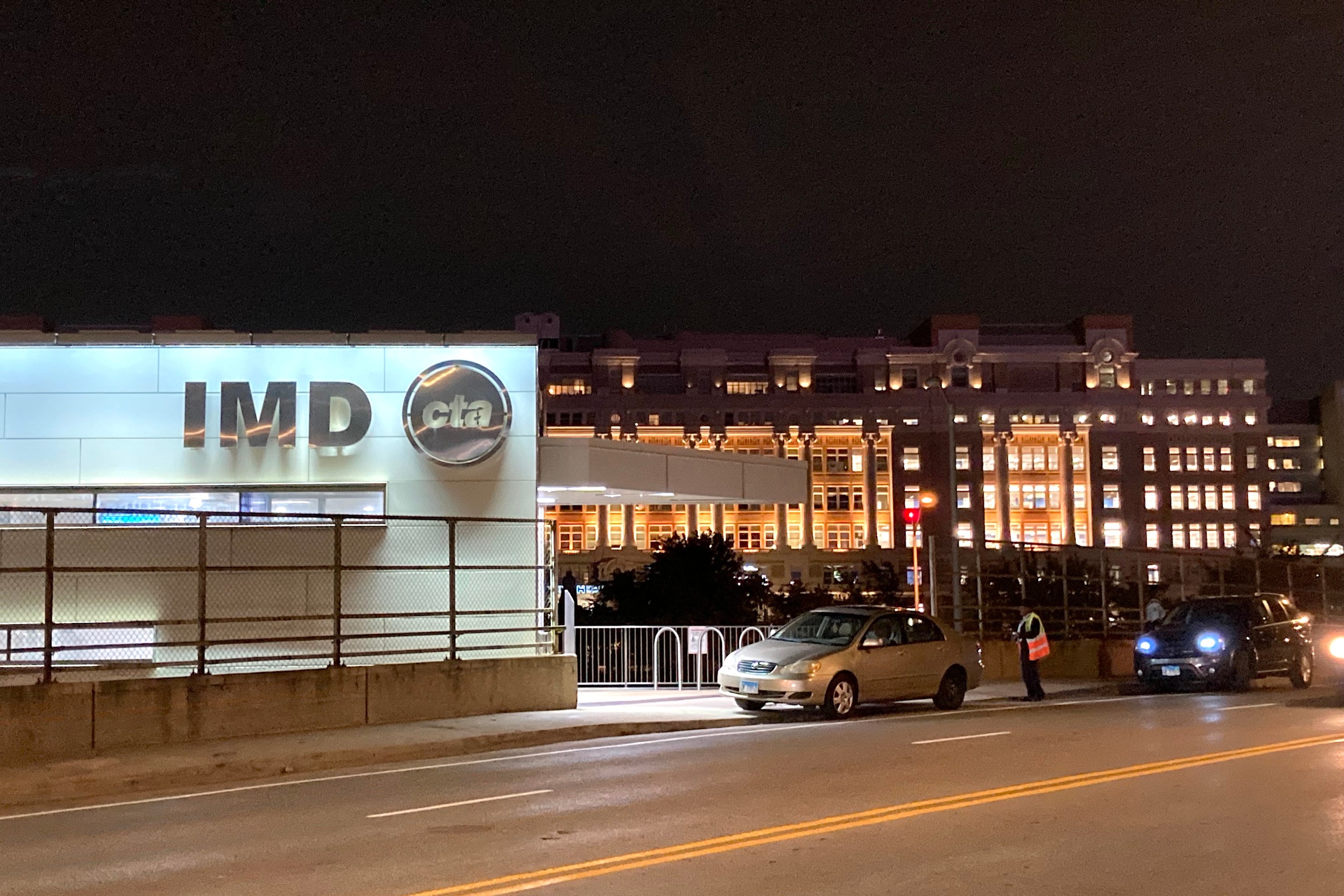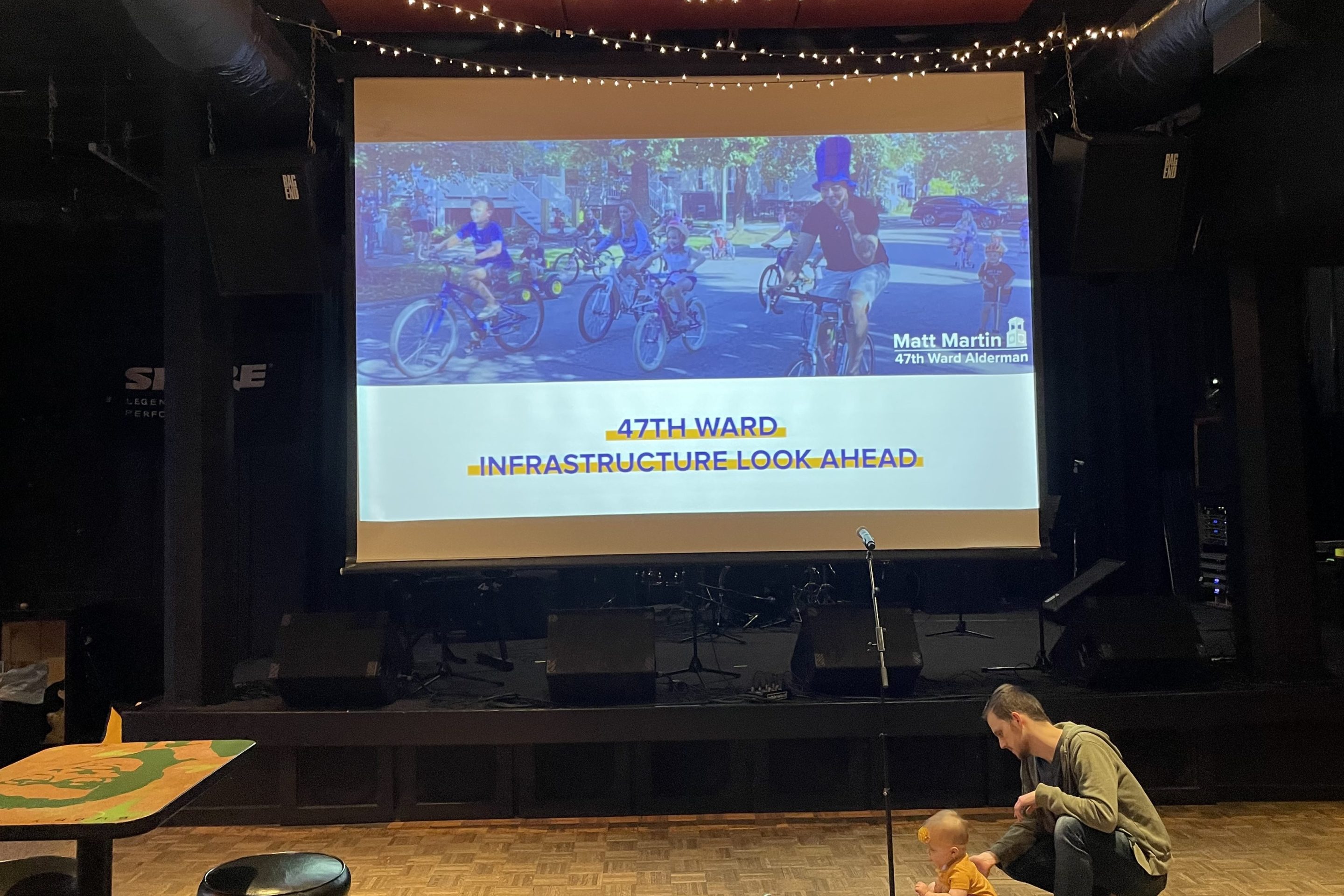Last week GOOD Chicago, a progressive think tank, hosted a panel discussion at the Chicago Cultural Center about the city’s plans for bus rapid transit on Ashland Avenue between 95th and Irving Park. The project will start with an initial segment running from the Orange Line at 31st to Metra’s Clybourn stop at Cortland. The panel, moderated by Tracy Swartz, RedEye’s CTA reporter, featured Active Transportation Alliance director Ron Burke; CTA Manager of Strategic Planning Joe Iacobucci; Steve Schlickman, head of UIC’s Urban Transportation Center; and Chris Ziemann, the city’s BRT manager. After the roundtable, George Aye of Greater Good Studio led a hands-on workshop to design BRT bus stop prototypes.
The panelists outlined key elements of the 16-mile BRT route, featuring center-running buses and dedicated bus lanes, which will require the removal of travel lanes for other motorized traffic. There are also plans for signal prioritization and pre-paid, level boarding, so Ashland would be the first U.S. bus route to achieve the Institute for Transportation and Development Policy’s gold-standard rating. When the floor was opened for questions, I asked how they’re going to persuade residents that it’s worth it to turn car lanes into bus lanes.
John Greenfield: It seems like the hardest thing about this project is going to be convincing people it’s a good idea to take traffic lanes off of Ashland. What’s your strategy for winning people over to this?
Steve Schlickman: Doing it. Really, just get it out there. That’s why I think the incremental approach is a good one, because you’re not trying out too much that’s going to scare too many people. Doing it just on Ashland from 31st Street to Cortland and showing how people how it works, and will allow it to grow in the future and take away that worry from other areas where you’re going to see BRT.
Joe Iacobucci: And I’d say our communication has been very strong. I think that if you see the fact sheets, you’ll see that part of what we do is infographics. We want to make sure that the information and the value of the project, and what we’re trying to do with this project is digestible for folks. So if you show people how many hours a year they’re going to save, they can understand the value.
The second part of that is explaining the impacts, right? Understanding what the impacts are of the loss of travel lanes - that’s a thing that we take very seriously. As part of our first phase of planning [when the city was considering building BRT on Ashland, Western or both], we had people go out and count every single parking space along both Western and Ashland. We’re talking about 32 miles of roadway. We also want to see the utilization data for that.
That way we can tell a business owner, if we’re looking at impacting his parking spots, we could say that on a Saturday afternoon, only three of the spots are being utilized and that’s the most utilization of a lot of these spots. There’s a lot of overnight parking. So the impacts are something we take seriously and something we’ve been candid about.
At the same time, we’ve been able to communicate the value of this project. When we look at some of the demographic shifts, the younger is generation driving less now. Even things like car-sharing are becoming mainstream now. Both of Chicago’s car-sharing companies are actually profitable businesses, right? It’s a great testament of what we’re going through in Chicago right now.
Ron Burke: And, John, I would just mention that we’ve talked to something like 26 aldermen and 60 community organizations in the corridor. While many of them are not officially on record endorsing BRT, once they’ve learned about the project the feedback has generally been very supportive.
There’s inevitably going to be some pushback because it’s change. It’s different. But, as Steve mentioned, in other cities, including American cities, where these projects have been implemented, once they’re in, they’re very popular. People see it in action and they’re like, “Huh, that really works, I like that.” The buses go a lot faster, and the cars only go a little bit slower. We’ve talked about restricting left turns, and while that may be a small inconvenience for some people who are trying to get into a certain neighborhood, they’ll figure out how to get there. We’re on a grid in Chicago. They’ll still be able to get to their destination.
Another advantage to eliminating turns is that we’ve seen that crashes – cars, bikes, pedestrians, all of the above – they mostly happen at intersections, and they often involve turns. That’s just kind of an aside, but that’s one of the benefits that people might not recognize, the safety factor.
Chris Ziemann: It’s also an advantage from an on overall “50,000-foot” urban mobility standpoint. On Ashland there’s traffic at rush hour. There’s not very much traffic outside of rush hour, and you’ll see cars driving at 40 or 50 mph. So on one hand it’s a safety thing, on the other hand it’s more of an urban mobility thing. Some congestion’s always healthy, but if you have some congestion now during rush hour, and you want people to move to your city, we could do nothing and let it get more and more and more congested, and then nobody could go anywhere on Ashland. Or you can actually do something and allow a faster alternative to mobility on Ashland.
Note: Active Trans recently put out an action alert asking Chicagoans to endorse the city's BRT plan. Sign up here to register your support.
